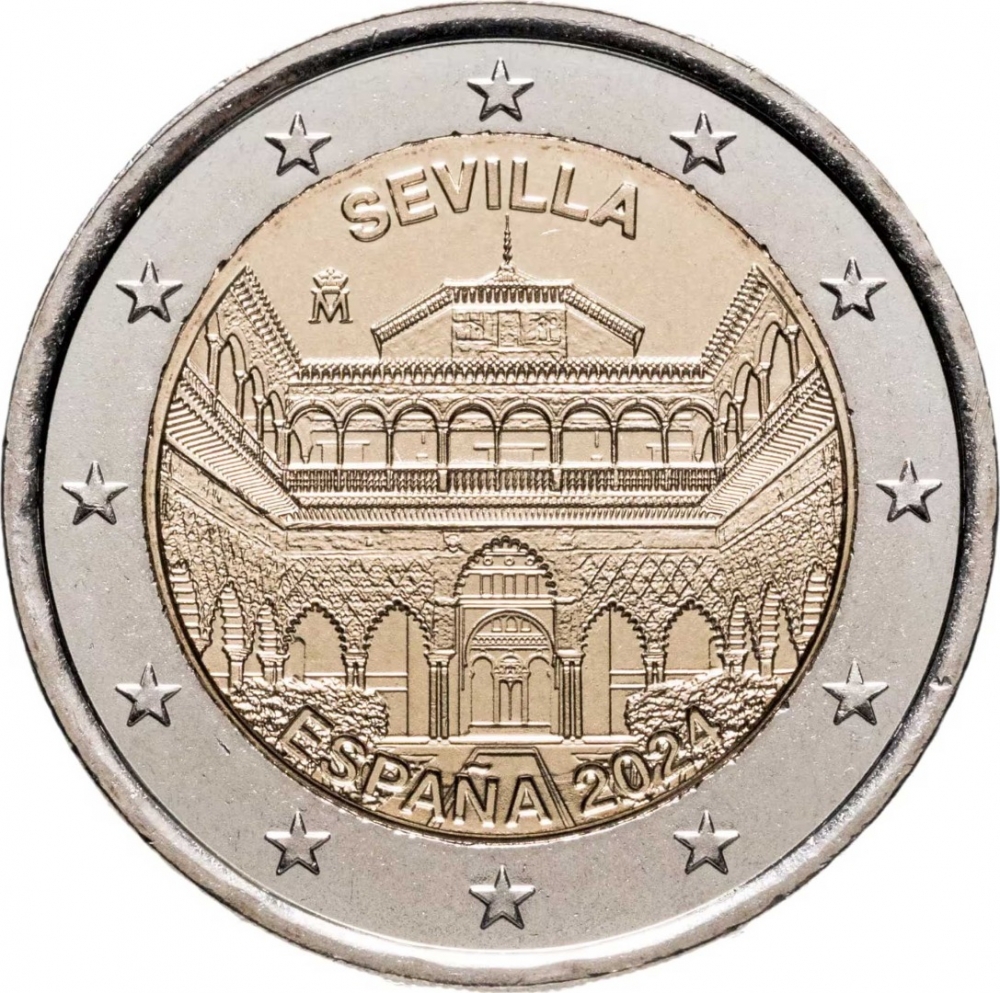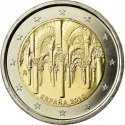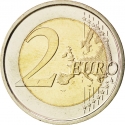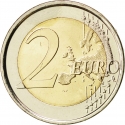You are about to finish your registration. Please check your mailbox (including spam folder). There should be a letter with a confirmation link. Check setting to make sure that your e-mail address is correct.
Send letter againDescription
The Royal Alcázar of Seville is a historic royal palace, originally an Islamic citadel dating back to the 10th century. After the city's conquest by Castile in 1248, it underwent significant reconstruction, including the addition of lavish Mudéjar-style architecture commissioned by Pedro I in the 1360s. This architectural masterpiece blends Mudéjar, Gothic, and Renaissance influences. Today, portions of the Alcázar are still utilized by the royal family during visits to Seville and are overseen by the Patrimonio Nacional. Recognized as a UNESCO World Heritage Site since 1987, it shares this distinction with the nearby Seville Cathedral and the General Archive of the Indies.
Obverse

|
Depicts the interior view of the Patio de las Doncellas in the Royal Alcázar. The inscription above, mintmark (crowned M) below, the country name and the date on the bottom. The outer ring contains the twelve stars of the European Union. SEVILLA |
|---|---|
Reverse

|
A geographical map of Western Europe spans the outer ring and inner core on the right side of the coin. The inscription 2 EURO is superimposed over the map of Europe, with the numeral “2” located in an open field representing the eastern Atlantic Ocean. 2 EURO |
| Edge |
The sequence "2 ★ ★" repeated six times alternately upright and inverted 2 ★ ★ 2 ★ ★ 2 ★ ★ 2 ★ ★ 2 ★ ★ 2 ★ ★ |
2 Euro
UNESCO World Heritage
Alcázar of Seville
Subscribe series
N# 401373
UNESCO World Heritage
Alcázar of Seville
Shop now (1 offer)
Swap now (1 offer)
Characteristics
| Type | Commemorative Issue (Circulating) |
| Material | Bi-Metallic |
| Ring | Cupronickel |
| Center | Nickel Brass |
| Weight | 8.5 g |
| Diameter | 25.75 mm |
| Thickness | 2.2 mm |
| Shape |
|
| Alignment | Medal |
| Mint |
Royal Spanish Mint (FNMT-RCM)
|








